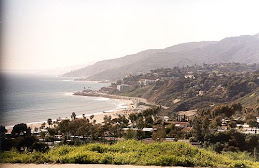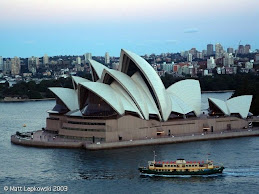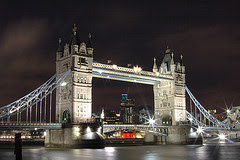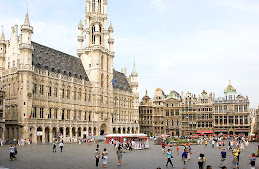Update:
UPA takes U-Turn @ http://www.dailypioneer.com/130172/UPA-takes-U-turn-on-Lanka-Tamils.html
---------------------------------------------------------------
Of Tamils and Tamil Tigers
Kalyani Shankar, Pioneer
The UPA Government is in a fix over the mounting clamour in Tamil Nadu for Delhi to stop Colombo from clobbering the LTTE. The Congress, no friend of the Tamil Tigers, could lose the DMK as an ally if it does not act. Yet it can’t be seen defending the Tigers.
Is the Government going to interfere in the ethnic conflict in Sri Lanka or is it simply going through the motions to pacify its ally, the DMK, in Tamil Nadu? The reason for the concern is that the Sri Lankan military forces are carrying out a serious offensive against the LTTE and are said to be very close to Kilinochchi, the headquarters of the LTTE.
Lankan authorities are almost on the verge of breaking the banned LTTE and capture its leader V Prabhakaran. The Government stand makes it clear that while the matter is being taken up at the highest level, there may not be any major shift on the Sri Lankan policy because of its limited options.
Although the clashes between the armed forces and the Tamil Tigers have been going on for long, the Indian Government’s urgency to take up the issue with the Sri Lankan Government arose now because of the pressure from the ruling DMK in Tamil Nadu.
For the past week, a lively political drama was being enacted in the southern State. Chief Minister M Karunanidhi had gone to the extent of issuing an ultimatum to the Centre to put pressure on the Sri Lankan Government for a ceasefire, giving two weeks’ time which ends on October 29. However, the present indications are that he may not take any drastic measures to pull out from the UPA Government at the Centre.
Why have the political parties in Tamil Nadu taken up the Tamil issue now?
According to the UN, more than two lakh people have been displaced because of the military offensive in Sri Lanka.
This has led to the fear of a refugee inflow from the island nation. Political parties, including the DMK, PMK and MDMK, are concerned at the military action.
The critics of the DMK Government say that the ruling party wants to divert attention from the severe power crisis in the State. Others point out that elections are round the corner and the DMK wants to make a case for itself that it had taken up the cause of the Tamil people in Sri Lanka. It is also likely the party is anxious to distance itself from the UPA to keep its options open for a post-election realignment of political parties.
The Congress, without whose support the DMK Government in Tamil Nadu would fall, is playing its own game. To show solidarity with the Tamil people, Congress MPs had attended the all-party meeting convened by Mr Karunanidhi but did not resign from the Lok Sabha as demanded by the DMK chief.
The Congress cleverly took the stand that it was all for protecting the interests of the Tamils but it was certainly against the LTTE, thereby differentiating between the Tamils and the LTTE.
The Congress has to tread carefully because there is a warrant pending against LTTE chief Prabhakaran in the Rajiv Gandhi assassination case. On the other hand, local Congressmen are now keen to have a tie-up with the AIADMK. The Congress has in the past tied up both with the DMK and the AIADMK.
The dilemma facing the Centre is that New Delhi has been following a hands-off policy on Sri Lanka after the assassination of Rajiv Gandhi. Officially, India’s stand is that it wants a negotiated settlement within a united Sri Lanka, knowing that any fragmentation of that country could have serious consequences. Therefore, New Delhi cannot go beyond a point to put pressure on Colombo.
The Sri Lankan Government on its part is sending the President’s special envoy to New Delhi on October 26 while External Affairs Minister Pranab Mukherjee may travel to Colombo later for further negotiations. However, these are mere signals. At the most, the Sri Lankan envoy may come up with a message that the military attack would be stopped if the LTTE gives up its arms and come for negotiations, but the LTTE is not ready to do so.
So where is the meeting point?
The Rajapaksa Government is determined to put down Prabhakaran now when the LTTE is weak and when the Government has an edge over the Tigers militarily. However, even if the military were to succeed in taking over Kilinochchi, Prabhakaran could flee with his followers to the dense forest. In addition, the locals may not support the military if they are still supporting the LTTE. While the Tigers are ready for an indefinite fight, the Sri Lankan Government will also worry about its international image if brutal military action is taken against LTTE.
Ultimately, the two sides should realise that a military solution is not desirable and a political solution alone would yield peace. For a political solution, both sides need to be a little more flexible. The LTTE should realise that its demand for an independent Tamil Eelam will never become a reality. The Sri Lankan Government, which shuns the idea of federalism, should be a little more flexible and offer a face-saving formula to the LTTE. Negotiations can begin only if there is readiness on their part and as of now, the Government has an upper hand.
Back in India, the Prime Minister has a difficult task. He not only has to deal with a foreign Government on a sensitive issue but also tackle the UPA partners in Tamil Nadu with kid gloves.
India has not forgotten the lessons of sending the IPKF to Sri Lanka. Above all, the political parties in Tamil Nadu should draw a line between Tamils and Tamil Tigers.
Related stories:
Deadly Triangle @ http://www.srilankawatch.com/index.php?option=com_content&task=view&id=172&Itemid=1
LTTE & Churches @ http://www.christianaggression.org/item_display.php?type=ARTICLES&id=1112887194
skip to main |
skip to sidebar













Don't put the key to your
happiness
in someone else's pocket.
INTERFAITH

Informative Links
Bharat Raagini
Incredible : INDIA
Dil Hai Hindustani
Aana Hai Tou Aa
Jagte Raho
Behti Hai Ganga
Insaaf Ka Mandir
Los Angeles,USA

Sydney, AUSTRALIA

Himalayas, India

Swiss Alps

Eiffel Tower,Paris

Tower Bridge, London

Grand Place, Brussels

SUNRISE

Machu Picchu, PERU

Venice

Modern Art

Pencil sketch

Think about this;
Don't put the key to your
happiness
in someone else's pocket.